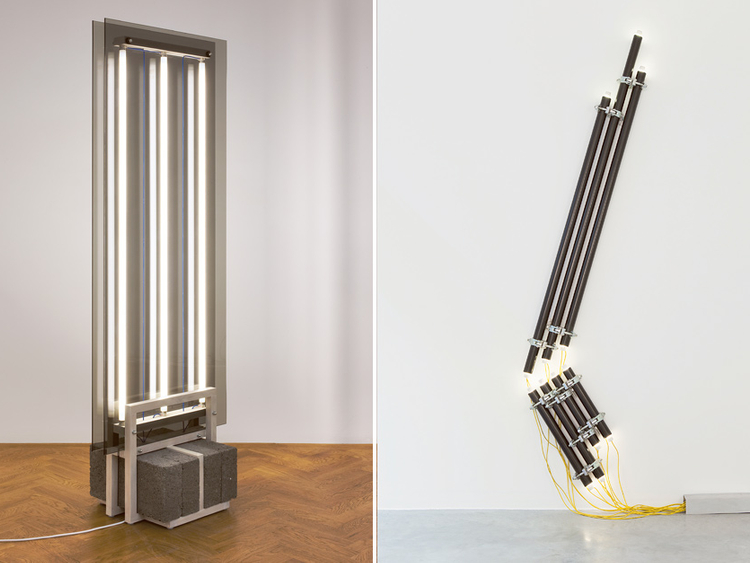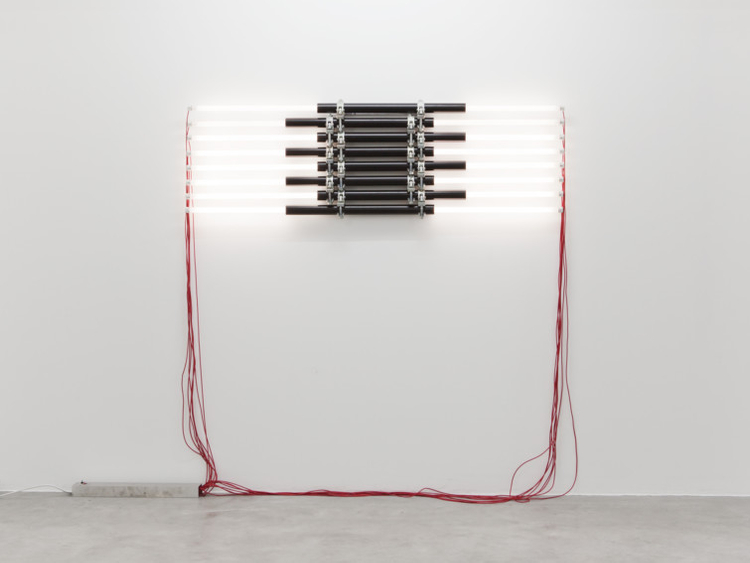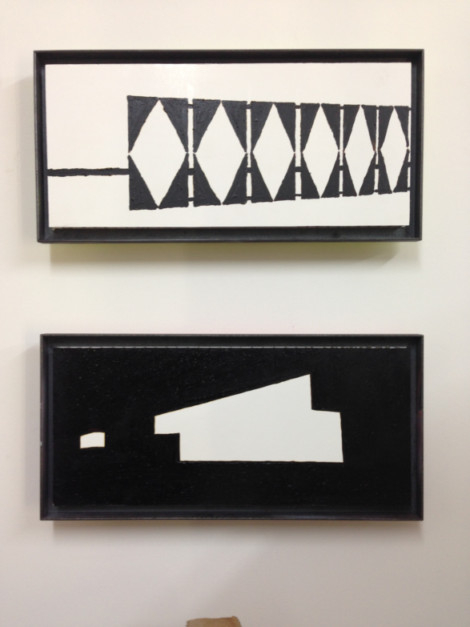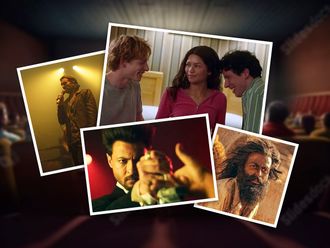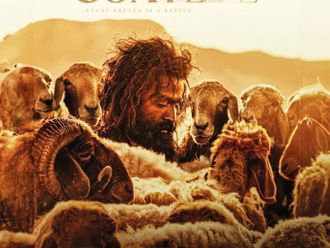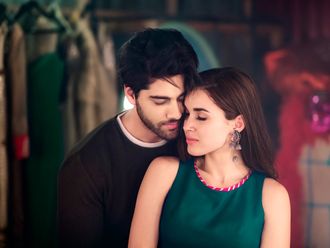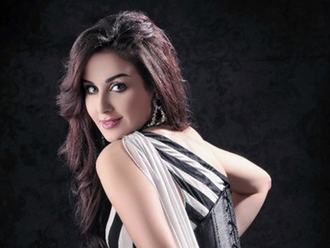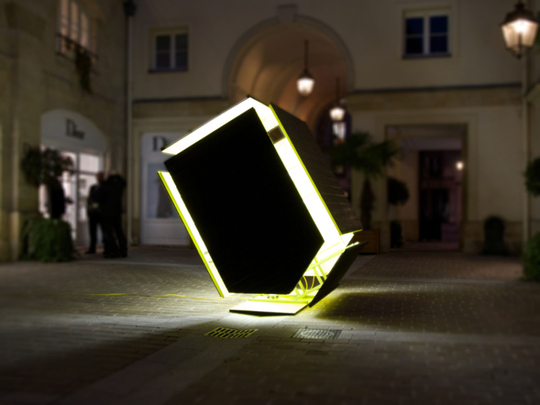
London-based British artist Nathaniel Rackowe uses light as a medium, combining it with materials associated with urban architecture to create works that speak about our ever-changing and chaotic cities.
His first solo exhibition in Dubai, “Radiant Trajectory”, features a series of wall-mounted works made from neon lights, scaffolding tubes and clamps, and a set of free-standing glass-and-light sculptures. The artist has also especially created for this show a series of bitumen paintings inspired by Dubai. The centre-piece of the show is a large-scale installation featuring a shed that has been pulled apart, turned upside down and illuminated. The artist hopes his artworks will make people look at their surroundings in a new way, and find beauty in them.
Weekend Review spoke to Rackowe about his fascination with light and the urban environment. Excerpts:
How did you get interested in using light as a medium?
My work is about urban space and architecture. I began using light in my sculptures and installations because it allows me to blur the boundary between the artwork and the space around it. The title “Radiant Trajectory” speaks about my interest in the ethereal radiance of light as well as its physical aspect as a line that moves in a certain direction.
What are the SP (“Scaffolding Pieces”) and GP (“Glass Pieces”) series about?
I have been working on these series for some time. In the “SP” series, I have created various configurations of scaffolding tubes, clamps and fluorescent lights. I am fascinated with the idea of cities in flux, and find the continual process of building, destruction and renewal of an urban environment very dynamic and exciting. Hence, I have taken an aesthetic such as scaffolding from building sites to create works that make people see the beauty that I can see in these places. The stacking and geometric patterns; and the contrast between the black powder coating on the tubes and the white light, reflect the urban environment. The “GP” series of installations, made from glass, oak wood and concrete blocks, are inspired by the billboards I see around London. Again, this is about finding those transcendental moments of beauty within the city.
Is the hint of menace in the work intentional?
The black metallic material and the large clamps make it look menacing. The tension in the work reflects the fact that a city is not an easy place to live, and one has to find the balance between the harsh urban environment and the beauty in it.
Do you use found materials from construction sites?
No, I buy new materials because it is important for me not to use materials that have a history, which will then become part of my work. I like the association with urban architecture, but I want to make new structures and objects that present these familiar materials in a new way. My work is drawn from my personal experiences of visiting various cities around the world, and details such as the colours of the wires are inspired by the colours I see on street signs and road markings in different cities. I never hide the wires or power supply because I want the work to be honest, with no illusions.
What was the idea behind the “Dubai Series” of bitumen paintings?
This summer, I spent a few days in Dubai going around the city taking hundreds of photographs. These paintings are abstracted versions of the cityscapes I captured. I used bitumen on white honeycomb cardboard to give the works a three-dimensional quality. I made the metal frames myself, and sprayed paint on the back, to create a subtle glow on the wall, adding an element of light to the works. Dubai is growing and transforming at a rapid pace, and the idea behind these paintings is to capture a moment of that, and to find something incredible and positive in the chaos and craziness of this dynamic and exciting city.
You have made several works using sheds. What is the inverted, expanded, indoor shed in this show all about?
I am interested not in architecture or finished buildings, but in the idea of the organic changes happening in a city, and how we deal with the difficult existence in such an environment. So, temporary structures, accidental architecture, homemade structures and garden sheds are important because they say a lot more about a city than the fancy skyscrapers. Also, if you ask a child to draw a house, you would get something that looks like a shed. So a shed is a signifier for the simplest architectural form, and in a wider sense for a built environment. In “Black Shed Expanded”, I had fun deconstructing the idea of the city and literally turning it on its head. I used contrasting materials, surfaces and colours on the external and internal surfaces. This shed is no longer a roof, a floor and four walls attached to each other. It is as if the light inside has pushed the whole thing open, suggesting a dynamic relationship between light, form and structure, which I am constantly exploring in my work. The external surfaces painted black using bitumen contrast sharply with the interior, where the light from the powerful bulbs mounted on a steel structure is refracted off the walls, painted with a shade of bright yellow, usually found at construction sites in London. This shed speaks about cities changing and expanding; and about the older areas and structures that are an important, but often neglected part of a city.
Jyoti Kalsi is an arts enthusiast based in Dubai.
“Radiant Trajectory” will run at Lawrie Shabibi gallery until March 7.



